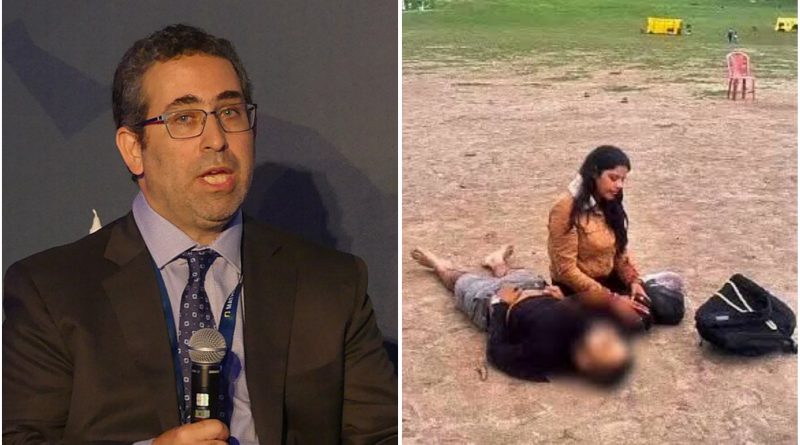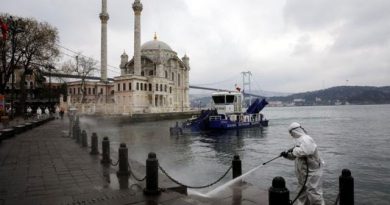Kashmir Horror: US Political Scientist Max Abrahms Predicts India’s Strike
The backlash from Kashmiris, combined with international sympathy for India, creates a political environment conducive to a strong Indian response.
On April 22, 2025, a horrific terrorist attack shook the serene Baisaran meadow in Pahalgam, Kashmir, claiming the lives of 26 tourists, predominantly Indian male civilians. The assailants, identified as Islamist extremists, executed their victims at point-blank range after determining their targets based on their inability to recite Islamic verses. This brutal act, attributed initially to The Resistance Front (TRF), a Pakistan-based terrorist group closely linked to Lashkar-e-Taiba (LeT), has escalated tensions between India and Pakistan, prompting expectations of a significant Indian military response.
A recent policy paper by Max Abrahms, a tenured professor of political science at Northeastern University, published by the Pacific Forum in Honolulu on May 2, 2025, provides critical insights into the dynamics of this attack and predicts a robust Indian retaliation.
Abrahms, a leading expert on terrorist group dynamics, begins his analysis by detailing the attack’s immediate aftermath. “Immediately after the mass casualty attack against civilians in Kashmir, the terrorist group known as The Resistance Front (TRF) claimed responsibility on the messaging app Telegram,” he writes. However, TRF later reversed its stance, denying involvement and attributing the initial claim to a “coordinated cyber intrusion” allegedly orchestrated by Indian cyber-intelligence operatives.
This denial, Abrahms argues, aligns with a well-documented pattern among militant groups worldwide. Drawing from his extensive research, he notes, “Many militant groups… have conditioned credit claims on whether the attacks got positive press coverage.” The TRF’s retraction, he suggests, was likely influenced by pressure from Pakistan’s security establishment and widespread protests by Kashmiris condemning the attack.
The TRF, founded in 2019, is described by Abrahms as a “close offshoot—or even just a front—of Lashkar-e-Taiba (LeT),” the notorious group responsible for the 2008 Mumbai attacks. An analyst quoted in the paper asserts, “All TRF operations are essentially LeT operations.” This connection underscores the attack’s broader implications for India-Pakistan relations, given LeT’s history of operating with tacit support from elements within Pakistan.
The initial claim and subsequent denial reflect a strategic attempt to mitigate the political fallout from an attack that targeted civilians, a tactic Abrahms has studied extensively. “Statistically, I have found with Justin Conrad that militant groups are significantly more likely to claim organizational responsibility when the targets are military personnel compared [to] civilians like the 26 tourists in Kashmir,” he explains.
Abrahms’ research highlights a global trend where terrorist groups distance themselves from civilian attacks to avoid reputational damage. He cites examples such as the African National Congress’s denial of involvement in 1988 attacks on civilian targets in South Africa, al-Qaeda’s dismissal of civilian casualties in Iraq as “lies concocted by the mainstream media,” and the Taliban’s routine denials of civilian deaths in Afghanistan.
In the case of TRF, Abrahms argues, “The Resistance Front appears to have engaged in a public relations strategy that I have dubbed as ‘Denial of Organizational’ to mitigate the political fallout from the controversial attack.” The group’s attempt to pin blame on Indian operatives mirrors tactics used by other militant organizations to deflect responsibility.
The Pahalgam attack’s civilian toll—26 unarmed tourists—makes a forceful Indian response almost inevitable, according to Abrahms’ analysis. “Civilian attacks depress the likelihood of a credit claim for a simple reason—they tend to backfire both politically and organizationally on the perpetrators,” he writes. His statistical studies reveal that governments are “over four-times as likely to employ lethal violence against a group when it attacks civilians compared to military targets.” This pattern suggests that India, already reeling from the loss of its citizens, will not limit its response to diplomatic measures.
Indeed, India has already taken significant steps in retaliation. Abrahms notes that the government has expelled Pakistani nationals, suspended the Indus Waters Treaty, shut down airspace, and engaged in cross-border firing along the Line of Control. However, he predicts a more substantial military operation, drawing a comparison to the 2019 Pulwama attack, which targeted Indian security personnel.
Following Pulwama, India launched Operation Bandar, a precision airstrike on a terrorist camp in Balakot, Pakistan, just 12 days later. “This time the Indian military response will be even more extensive given the target selection of the Islamist extremists regardless of whether they stand behind their heinous attacks,” Abrahms asserts.
The international community has expressed solidarity with India, with widespread condemnation of the attack amplifying pressure on New Delhi to act decisively. The targeting of civilians, coupled with the attackers’ reported use of religious tests, has drawn parallels to other Islamist extremist operations, further isolating Pakistan diplomatically.
Michael Kugelman, director of the South Asia Institute at the Wilson Center, commented on X that the lack of “clarity about the culprit” might temper India’s response. However, Abrahms counters this view, arguing that his research “leaves little doubt that the attack was indeed carried out by the Islamist group that originally claimed organizational credit.”
The Pahalgam attack also reignites concerns about the volatile India-Pakistan relationship, particularly in the context of Kashmir, a long-standing flashpoint. The region has seen intermittent violence, with militant groups exploiting local grievances to justify their actions. TRF’s claim of representing “Kashmir resistance” was undermined by the massive protests across the Valley, which Abrahms attributes to the attack’s indiscriminate nature.
The backlash from Kashmiris, combined with international sympathy for India, creates a political environment conducive to a strong Indian response.
Abrahms’ paper underscores the broader strategic implications of civilian-targeted terrorism. “Compared to attacks against government targets, civilian attacks significantly reduce the odds of government concessions while increasing the odds of the target country employing military force—often, in devastating fashion,” he writes.
This dynamic has been evident in India’s past responses to terrorism, including the 2001 Parliament attack and the 2008 Mumbai attacks, both of which prompted significant policy shifts and military posturing.
As India weighs its options, the specter of escalation looms large. A military strike, while satisfying domestic calls for justice, risks further destabilizing the region. Pakistan’s response to India’s actions—particularly the suspension of the Indus Waters Treaty and airspace restrictions—will be critical. Abrahms’ research suggests that India’s response will be calibrated to signal resolve without triggering a full-scale conflict, though the scale of the Pahalgam attack may push New Delhi toward a more aggressive posture.
In conclusion, the Pahalgam attack represents a tragic escalation in the cycle of violence in Kashmir, with far-reaching consequences for India-Pakistan relations. Max Abrahms’ analysis, grounded in rigorous political science research, offers a sobering prediction: India’s response will be forceful, driven by the civilian nature of the attack and the need to deter future atrocities. As the world watches, the coming days will test India’s strategic calculus and the fragile stability of South Asia.



